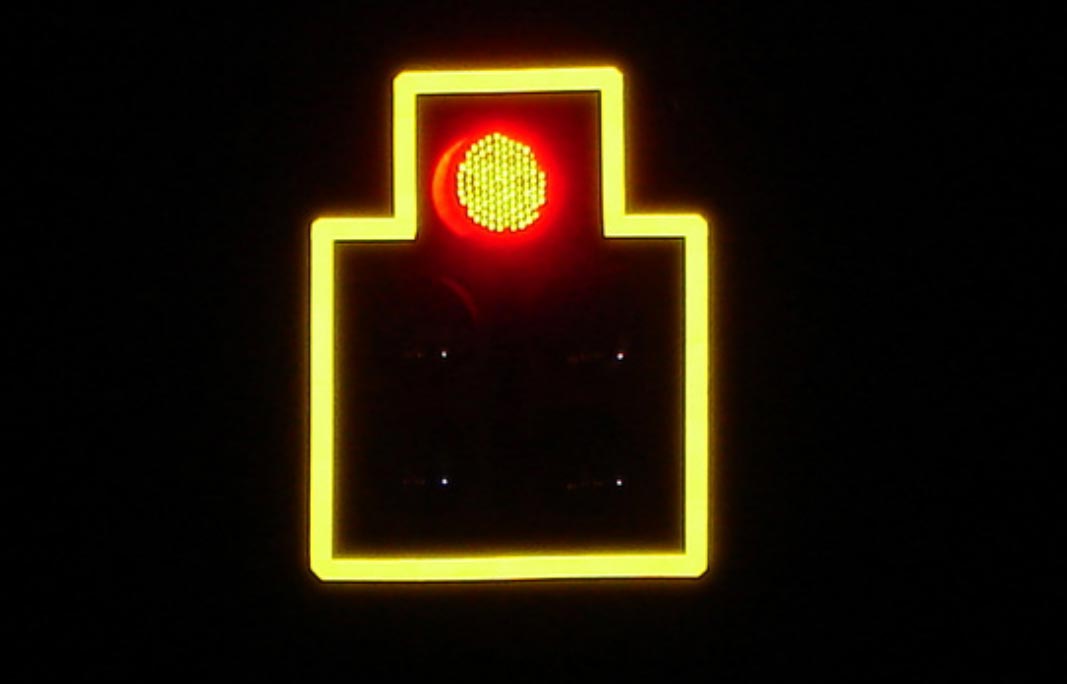U.S. Department of Transportation
Federal Highway Administration
1200 New Jersey Avenue, SE
Washington, DC 20590
202-366-4000
Backplates added to a traffic signal head improve the visibility of the illuminated face of the signal by introducing a controlled-contrast background. The improved visibility of a signal head with a backplate is made even more conspicuous by framing it with a 1- to 3-inch yellow retroreflective border. Signal heads that have backplates equipped with retroreflective borders are more visible and conspicuous in both daytime and nighttime conditions.
This treatment is recognized as a human factors enhancement of traffic signal visibility, conspicuity, and orientation for both older and color vision deficient drivers. This countermeasure is also advantageous during periods of power outages when the signals would otherwise be dark, providing a visible cue for motorists to stop at the intersection ahead.

Retroreflective borders are highly visible during the night.
Source: South Carolina DOT
Transportation agencies should consider backplates with retroreflective borders as part of their efforts to systematically improve safety performance at signalized intersections. Adding a retroreflective border to an existing signal backplate is a very low-cost safety treatment. This can be done by either adding retroreflective tape to an existing backplate or purchasing a new backplate with a retroreflective border already incorporated. The most efficient means of implementing this proven safety countermeasure is to adopt it as a standard treatment for signalized intersections across a jurisdiction or State.
Implementation challenges include minimizing installation time, accessing existing signal heads, and structural limitations due to added wind load in instances where an entire backplate is added. Agencies should consider the design of the existing signal support structure to determine if the design is sufficient to support the added wind load.
Sources
1. Sayed, T., Leur, P., and Pump, J., "Safety Impact of Increased Traffic Signal Backboards Conspicuity." 2005 TRB 84th Annual Meeting: Compendium of Papers CD-ROM, Vol. TRB#05-16, Washington, D.C., (2005).
Filter countermeasures by focus area, crash type, problem identified, and area type.
